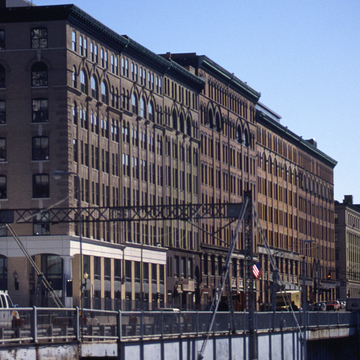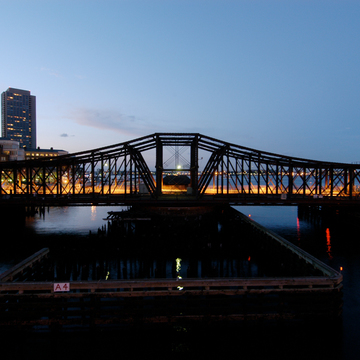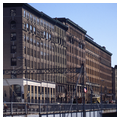Spanned by five movable-truss bridges dating from 1875 to 1931, the navigable Fort Point Channel, which separates downtown from the South Boston Seaport, has been called “The Museum of Bridges.” The oldest are the swing span Broadway Bridge (1875, altered 1902 and 1915) and the South Station Old Colony Bridge (1898, New York, New Haven, & Hartford Railroad), a Scherzer six-track rolling lift bridge. Two bridges draw on designs invented by T. Willis Pratt: the Summer Street Bridge (1900), a paired retractile draw, and the Old Northern Avenue Bridge (1904–1908), a triple-barreled truss swing span designed by Boston City Engineer William Jackson. The much altered Congress Street Bridge (1931), an electrically operated Strauss bascule overhead-counterweight drawbridge, replaced an 1874
You are here
Fort Point Channel Bridges
1875–1996. Fort Point Channel.
If SAH Archipedia has been useful to you, please consider supporting it.
SAH Archipedia tells the story of the United States through its buildings, landscapes, and cities. This freely available resource empowers the public with authoritative knowledge that deepens their understanding and appreciation of the built environment. But the Society of Architectural Historians, which created SAH Archipedia with University of Virginia Press, needs your support to maintain the high-caliber research, writing, photography, cartography, editing, design, and programming that make SAH Archipedia a trusted online resource available to all who value the history of place, heritage tourism, and learning.


















